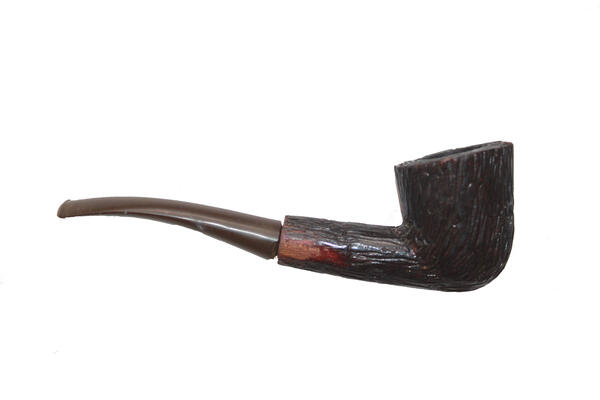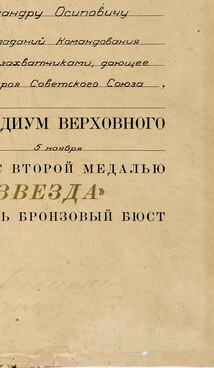The Polyarny Museum of History and Local Lore presents a tobacco pipe of Viktor Nikolayevich Leonov — twice Hero of the Soviet Union, commander of the legendary 181st Reconnaissance Detachment of the Northern Fleet, honorary citizen of Polyarny. Leonov personally presented the pipe to Konstantin Dobrovolsky, chairman of the Murmansk Oblast Coordinating Council of Search Teams.
From the very outbreak of the war, the fearless intelligence officer never parted with his pipe and it became his companion in battle. Viktor Leonov participated in more than 50 combat operations behind enemy lines. Leonov received the first star of the Hero of the Soviet Union at the final stage of the Great Patriotic War. He received the award for the uniquely complex operation at Cape Krestovy. After the war, he acknowledged that the landing at Cape Krestovy was harder than all of his previous naval reconnaissance operations.
After the end of the Great Patriotic War and the defeat of Germany, the war did not end for Viktor Leonov — he was sent to the Russian Far East, where he headed a Separate Reconnaissance Detachment of the Pacific Fleet. Under his direct command, the soldiers of the detachment were the first to land at the ports of Racine, Seishin and Genzan. These operations were odes to the glory of Soviet weapons. In the port of Genzan, Leonov’s detachment disarmed and captured about 2,000 enemy soldiers and officers, several ammunition depots, 3 artillery batteries and 5 aircrafts.
An even more high-profile case of Leonov’s detachment was the capture of 3.5 thousand Japanese soldiers and officers in the Korean port of Wonsan at once. They surrendered to a detachment of 140 Soviet sailors. By the Decree of the Presidium of the Supreme Soviet of the Soviet Union from September 14, 1945, Senior Lieutenant Viktor Leonov was awarded the Gold Star medal for the second time, becoming Hero of the Soviet Union twice.
Leonov’s tobacco pipe consists
of two parts — a stem the end of which the smoker puts in their mouth and a
shank with a bowl. The stem is made of acrylic. The shank and bowl are made of
wood — most likely cherry wood. The bowl has a flared conical bowl which is
characteristic of the Dublin pipe.






